Wilrose Pingol
Advisor: Lisa Landrum
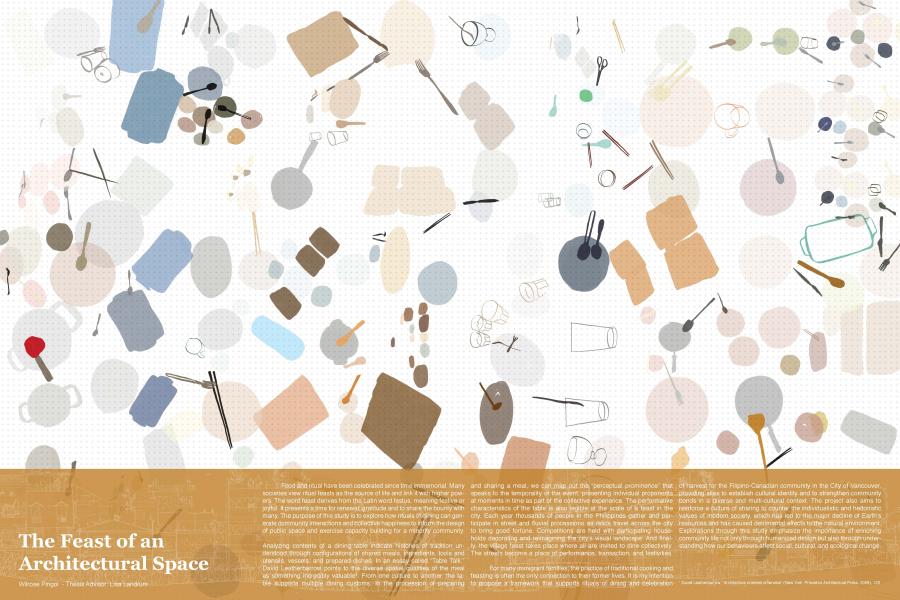

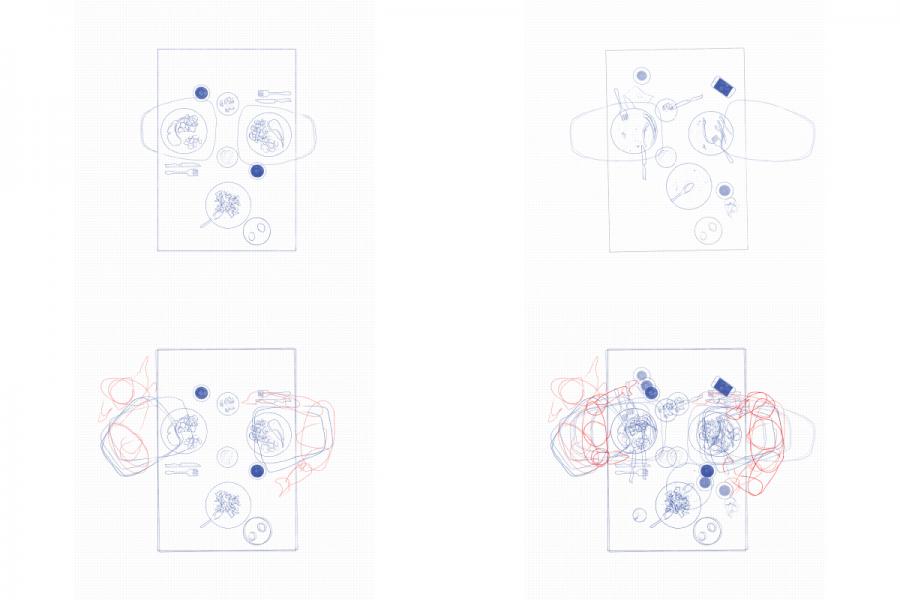
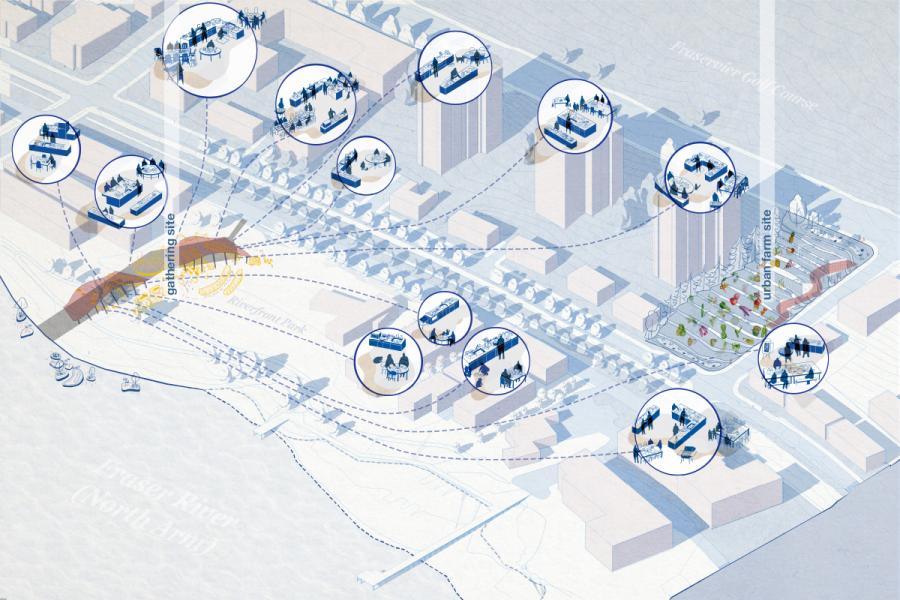
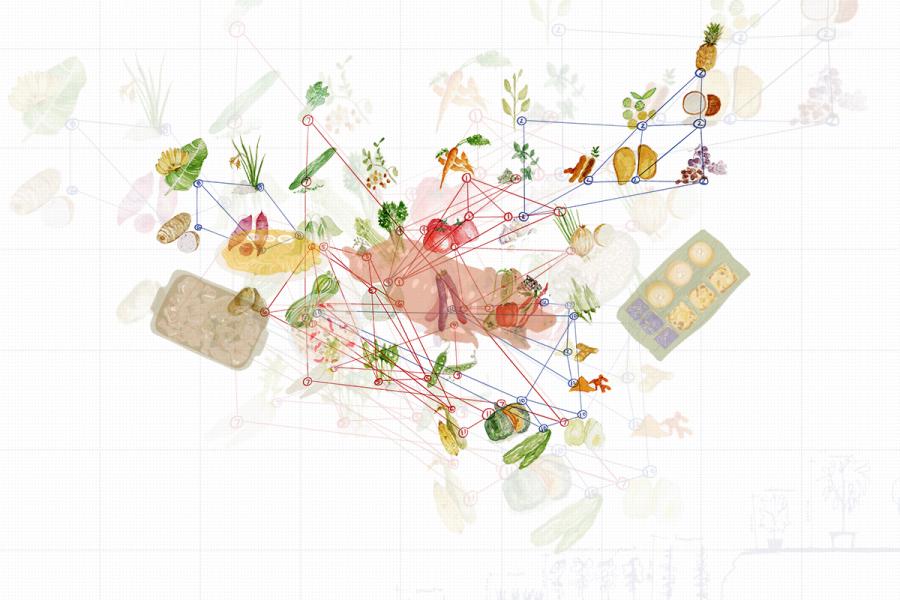
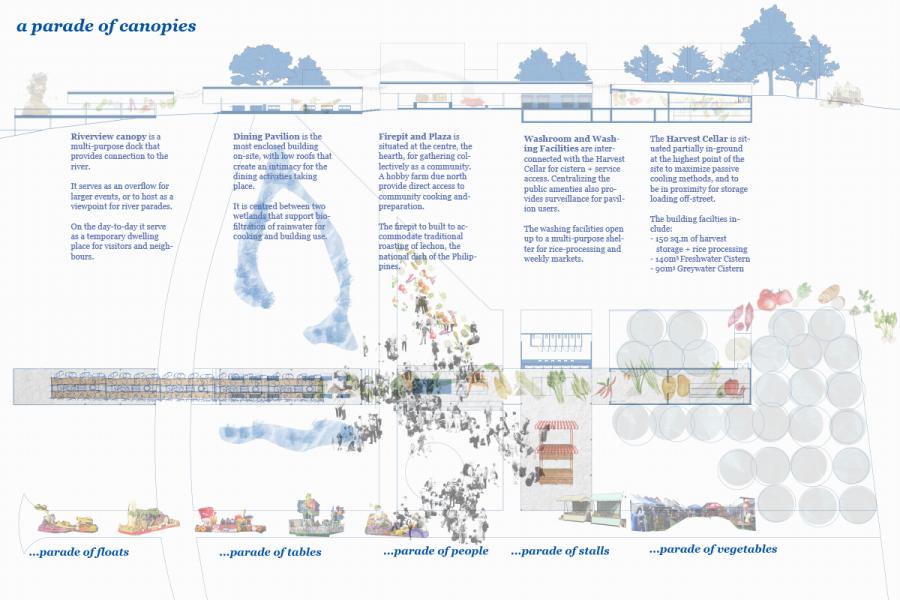
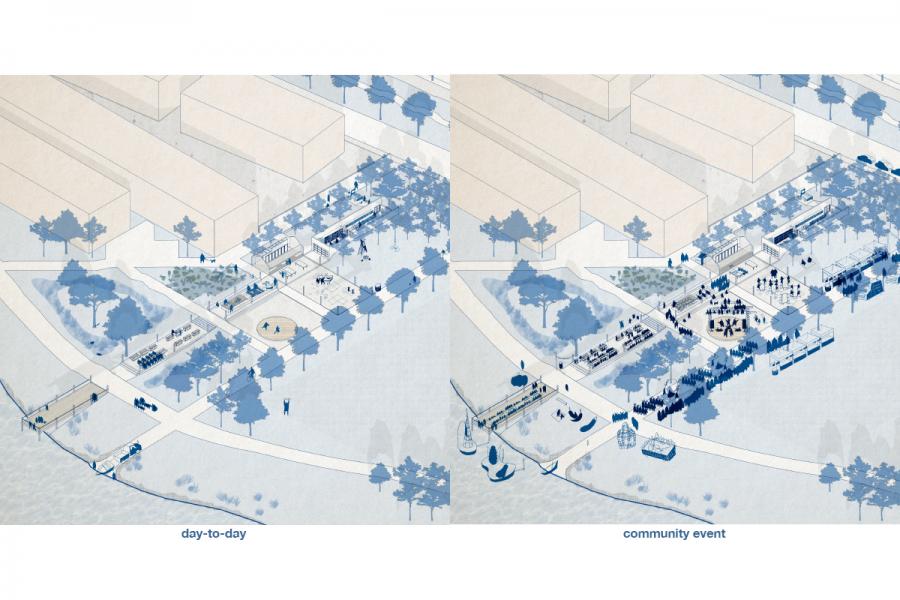
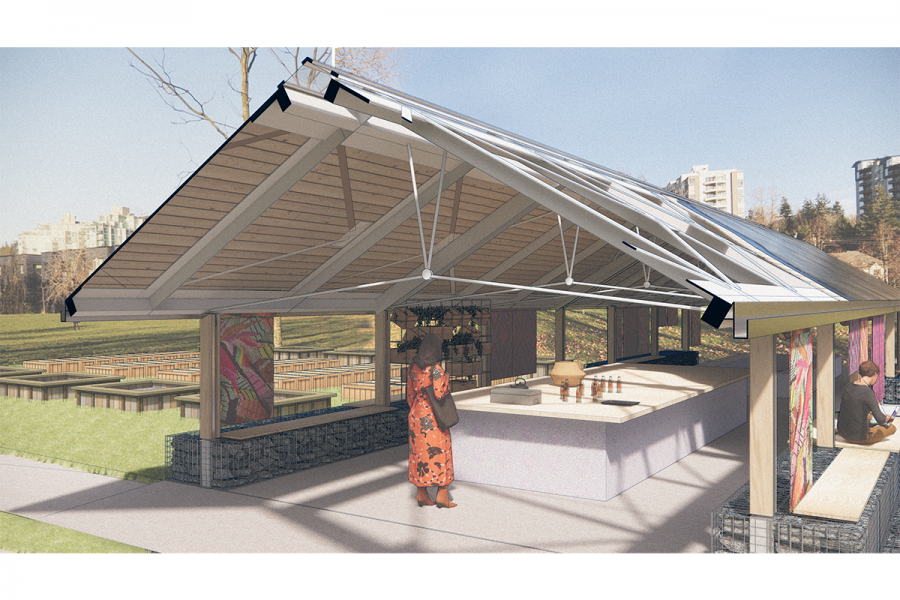
The Feast of an Architectural Space
Food and ritual have been celebrated since time immemorial. Many societies view ritual feasts as the source of life and link it with higher powers. The word feast derives from the Latin word festus, meaning festive or joyful. It presents a time for renewal, gratitude and to share the bounty with many. The purpose of this study is to explore how rituals of dining can generate community interactions and collective happiness to inform the design of public space and exercise capacity building for a minority community.
Analyzing contents of a dining table indicate histories of tradition understood through configurations of shared meals, ingredients, tools and utensils, vessels, and prepared dishes. In an essay called “Table Talk,” David Leatherbarrow points to the diverse spatial qualities of the meal as something incredibly valuable1. From one culture to another, the table supports multiple dining customs. In the procession of preparing and sharing a meal, we can map out the “perceptual prominence” that speaks to the temporality of the event, presenting individual proponents at moments in time as part of the collective experience.
The performative characteristics of the table is also legible at the scale of a feast in the city. Each year thousands of people in the Philippines gather and participate in street and fluvial processions as relics travel across the city to bring good fortune. Competitions are held with participating households decorating and reimagining the city’s visual landscape. And finally, the village feast takes place where all are invited to dine collectively. The streets become a place of performance, transaction, and festivities.
For many immigrant families, the practice of traditional cooking and feasting is often the only connection to their former lives. It is my intention to propose a framework that supports rituals of dining and celebration of harvest for the Filipino-Canadian community in the City of Vancouver, providing sites to establish cultural identity and to strengthen community bonds in a diverse and multi-cultural context.
The project also aims to reinforce a culture of sharing to counter the individualistic and hedonistic values of modern society, which has led to the major decline of Earth’s resources and has caused detrimental effects to the natural environment. Explorations through this study emphasize the importance of enriching community life not only through humanized design but also through understanding how our behaviours affect social, cultural, and ecological change.
1 David Leatherbarrow, “Architecture oriented otherwise” (New York: Princeton Architectural Press, 2009), 123.
